By Al Hemingway
As he watched the preliminary bombardment from the railing of his ship, Colonel Lewis B. “Chesty” Puller had deep reservations. The island that lay in front of him was Peleliu, just one small speck of coral in the Palau chain. Although the Marines had been reassured that the U.S. Navy had plastered every inch of the place with thousand of rounds of ammunition, Puller was not convinced that the Battle of Peleliu would be as easy as everyone claimed.
Puller went to the bridge of the ship to say his farewells. One navy captain casually asked if he would return for supper. Puller did not share the naval officer’s enthusiasm about a quick victory.
One of the Worst Invasions of World War II
“If you think it’s that easy why don’t you come on the beach at five o’clock, have supper with me, and pick up a few souvenirs?” he snapped. Puller’s concern about the impending Battle of Peleliu was right on target. The invasion would be one of the worst the Marines would encounter during World War II.
By 1944, although they were still a formidable foe, the Japanese were in a defensive mode. At Imphal and Kohima, British and Commonwealth Forces had halted the Japanese momentum and began driving them into central Burma. Meanwhile, the U.S. had taken the Solomon Islands, Tarawa in the Gilbert chain, New Britain in the Admiralties, and Guam, Tinian, and Saipan in the Marianas. The Allies now looked for other staging areas that could support future invasions and, ultimately, the seizure of the Japanese homeland.
Operation Stalemate
President Frankdlin D. Roosevelt was ultimately convinced by General Douglas MacArthur that the Luzon-Leyte approach to defeating the Japanese Empire was the more feasible method. First, the capture of Morotai was essential to protect MacArthur’s left flank from Japanese air assaults. The seizure of Peleliu and Angaur would secure his right flank.
The operation was called “Stalemate.” Several of the islands in the Palau group caught the attention of the planners. An archipelago that stretched over a hundred miles, the Palaus boasted many islands. The largest was Babelthuap and it possessed an airfield. However, it was soon eliminated as an objective. It was discovered that the airstrip was still under construction and could not be expanded. Also, the island was very rugged and well garrisoned. To complicate matters, the U.S. Army’s 77th Division, originally slated for the operation, had to be pulled and sent to Guam.
Stalemate was scrapped. A new directive was issued entitled Stalemate II. The U.S. Army’s 7th and 96th divisions made up the Eastern Attack Force, which was led by Vice Admiral Theodore S. Wilkinson. It would move on Ulithi and Yap, their new objectives. The U.S. Army’s 81st Infantry Division, known as the Wildcats, and the 1st Marine Division, would be the nucleus for the Western Attack Force, headed by Rear Admiral George Fort. The assignment to take Angaur was given to the Wildcats; Peleliu was handed to the Marines.
Peleliu Was Given Priority
Peleliu, one of the southernmost islands in the chain, already had a working airdrome, and it was given priority. In addition, the smaller island of Ngesebus, lying off Peleliu’s north shore and connected by a causeway, had an auxiliary fighter airfield. Situated just seven miles from Peleliu’s southern tip, Angaur was also chosen for potential airstrips that could handle the larger bomber aircraft.
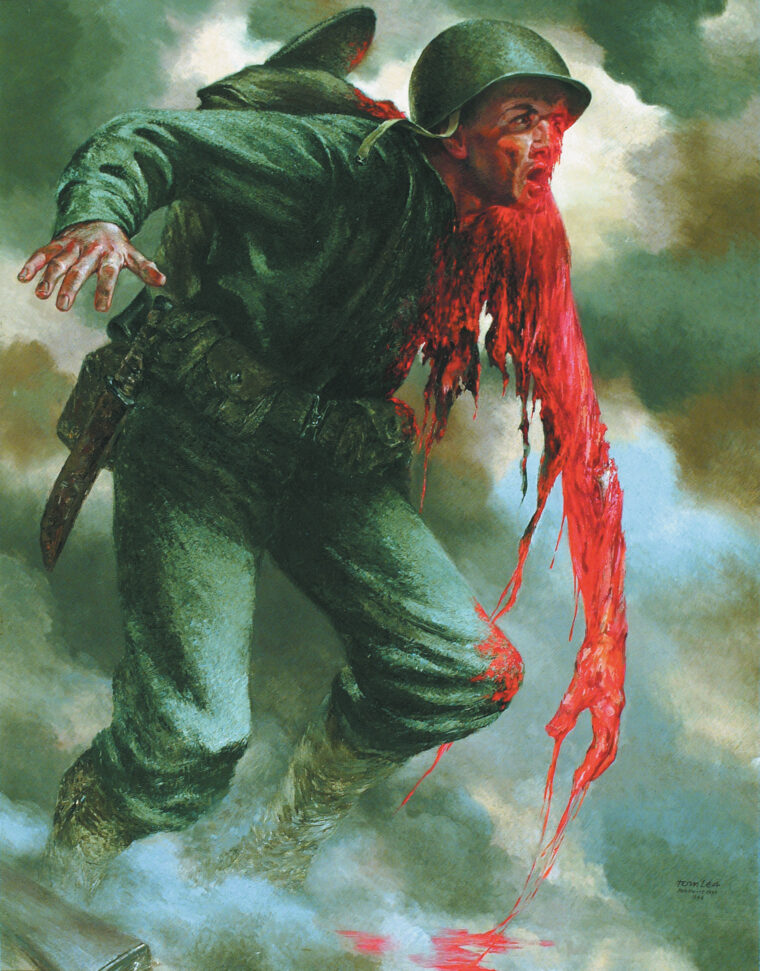
On a map Peleliu resembled a lobster’s claw. Approximately 20 square miles in size, it was encompassed by a “fringing-reef nearly 1,000 yards wide.” The southern end, where the airfield was located, was relatively level and open. On the eastern edge of the airfield was a thick mangrove swamp. To the west and south “lay scrub jungle liberally interspersed with wild coconuts and occasional grass-grown clearings.”
In the center of the upper claw, just north of the airstrip, was a series of coral ridges blanketed by thick jungle, called the Umurbrogol Mountains.
Several main roads, emanating from the airstrip, traversed the east and west coasts of this upper claw. They eventually met in the north and ended at the village of Akalokul. Here, there was a phosphate plant, radio station, and a “hand-operated narrow gauge railroad.” On the lower pincer of the claw, the Japanese had built a radio direction finder and a power plant.
Some Help From Military Intelligence
The Marines’ greatest concern was Umurbrogol Mountain. “There was never any question in the minds of the 1st Division planners but that the high ground north of the airfield was the key terrain feature of the island,” said Brig. Gen. O.P. Smith, 1st Marine Division assistant commander.
One thing in favor of the leathernecks was the enemy’s troop disposition on Peleliu. When Saipan fell to Marine and Army units in July, a large number of files were seized. Saipan had been headquarters to the Japanese 31st Army. The enemy had a penchant for maintaining meticulous records. The Japanese did not let the Marines down; these papers named the units stationed at Peleliu and the nearby island of Ngesebus.
A total of 25,000 enemy soldiers were in the Palaus. The “backbone” of the enemy troop strength on Peleliu was the 14th Division, one of the best units in the Japanese Imperial Army. It consisted of the 2nd Infantry Regiment, including one artillery battalion; the 3rd Battalion, 15th Infantry, including one 75mm artillery battalion, an 81mm mortar company, and 155mm mortar company; a tank unit comprised of 17 tanks; and mixed supporting units. In addition, the 53rd Independent Mixed Brigade, one independent infantry battalion, and the usual naval and construction personnel completed the complement of troops.
A Colonel Leads a General’s Army
Commanding the 14th Division was Lt. Gen. Sadae Inoue, a “stable and competent if uninspired” officer. His orders, given to him by War Minister Hideki Tojo prior to his leaving Tokyo, were straightforward. The islands must be held to the very last man. It was the first position barring the enemy from penetrating the Pacific. Peleliu and Angaur must be fortified as important air bases.
While Inoue’s headquarters were on Koror, 25 miles southwest of Peleliu, Colonel Kumio Nakagawa commanded the units on Peleliu itself. Upon his arrival in April 1944, he wasted no time in fortifying the island’s defenses. A paper entitled “Palau Group Sector Training For Victory” was sent to Nakagawa to follow. It was issued by Inoue but years later it was revealed that the talented Colonel Tokechi Tada, Inoue’s chief of staff, was the actual author of the document. In all, over 10,000 Japanese soldiers waited for the Marines on Peleliu.
Inoue also sent Maj. Gen. Kenjiro Murai to Peleliu, which raises an interesting question. why was a colonel in command of the ground forces when a major general was present? This was not answered until years later when Lt. Col. Waite W. Worden, a veteran of the Peleliu campaign, questioned Inoue while he was an inmate in a naval prison on Guam. He told Worden that Murai was dispatched to Peleliu as “insurance” because it was considered an important island and, most importantly, to “cope with the navy.” There was a Japanese flag officer on Peleliu, Vice Admiral Itou, and Murai would be of equal rank. Inoue realized that the army and navy were “at bitters odds” and the general’s presence would be a buffer between them and Nakagawa.
In the Umurbrogol, the Japanese Army on Peleliu had been digging “like moles” to create their defenses. Using the natural coral outcroppings that stretched over 5,000 yards from the airstrip to Hill 80 in the northern region, they constructed a “monster Swiss cheese, pocked … with caves and crevices.” Some were tiny and could only hold a lone rifleman; others were so immense they held entire battalions. Each cavern had a letter designation and was used for specific purposes. Most had several entrances and exits and were ingeniously hidden. Also, to protect the inhabitants from gunfire and the concussion of the larger shells, sharp turns and small slots were cut into the walls of many of the caves.
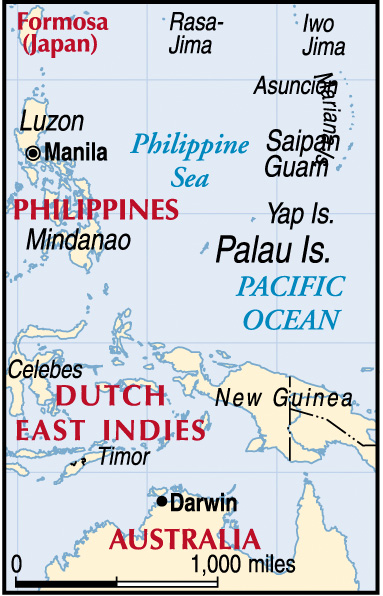
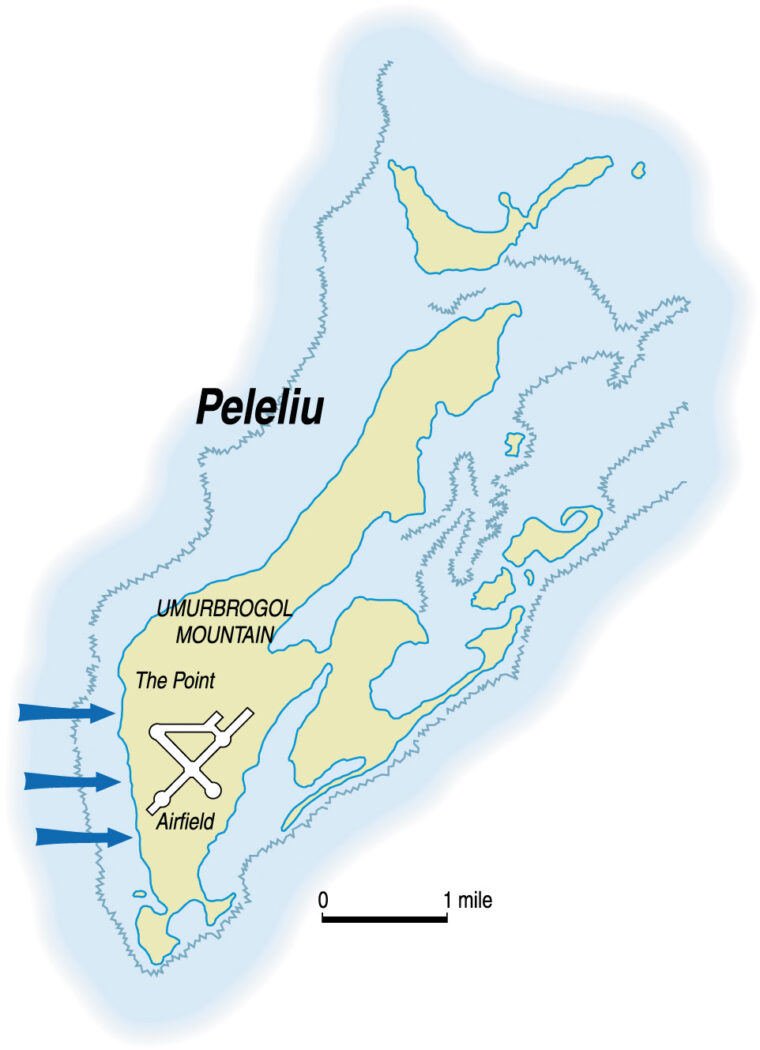
In the northern section of Peleliu, the 214th Naval Construction Battalion built some of the more elaborate caves. Most of the men who served in this unit had been miners and tunnel laborers before the war started. Most of their dwellings had electric lights, ventilation systems, and medical rooms. In sharp contrast to the Army, which preferred utilizing natural formations to build their fortifications, the Japanese Navy built theirs from scratch “free from the cluttering stalactites and stalagmites” found in the Army’s caves.
Either way, by blasting or the more laborious method of shoveling, over 500 caves were later identified. The exact number will never be known.
Nakagawa had divided the island into four defensive sectors with two battalions defending each. He anticipated that the Marines would land in the southwest section of Peleliu because of the close proximity of the all-important airstrip. It was here that he placed his heavy artillery and huge naval guns. The antiaircraft weapons and light and heavy machine guns protected the airfield. The approaches to the beaches were strewn with hundreds of mines. The island bristled with 37mm and 75mm antitank guns, rifle pits, antitank ditches, and reinforced concrete pillboxes. All of the automatic weapons had established interlocking fields of fire. Nakagawa had taken great care in establishing the island’s defenses. He was determined to kill as many Marines as possible.
Chesty Puller’s Unlucky 1st Marines
While the Japanese were busy preparing for the inevitable assault, the 1st Marine Division staff was busy as well. After careful consideration, the initial landing would take place in the southwest area of the island with elements of three regiments landing abreast.
Coming ashore on White One and Two would be two battalions of Colonel Lewis B. “Chesty” Puller’s 1st Marines (code-named Spitfire). The other battalion would be held in regimental reserve. Their assignment was to push inland past the barracks area, turn left, and assault the nose of the Umurbrogol Mountains.
Two battalions from the 5th Marines (Lonewolf) would land on Orange One and Two, linking up with the 1st Marines on their left and striking straight ahead toward the eastern shore. Led by Colonel Harold D. “Bucky” Harris, the other battalion would disembark one hour later, advance between the other two, and attack across the lower end of the airfield. After the airstrip was in Marine hands, they would begin to move on the flat northeastern peninsula and the small islands offshore.
Lastly, the 7th Marines (Mustang) would hit Orange Beach Three with two battalions following each other. Commanded by Colonel Herman H. “Hot-Headed” Hanneken, the Marines would then wheel right and attack the enemy at the southern promontories. One reinforced battalion would be kept as regimental reserve.
No doubt, Puller’s 1st Marines had drawn the short straw. “The White Beaches were flanked by a low coral bluff on the left and a tiny peninsula on the right,” wrote author Jon Hoffman in his book Chesty: The Story of Lieutenant General Lewis B. Puller, USMC. “[B]oth offered the enemy positions from which to direct deadly enfilade fire down the length of the regiment as it splashed ashore. Aerial photos had not revealed any defensive works at either place, but the Japanese were noted for their skill at camouflage. Senior officers in the 1st Marines were concerned about the danger and asked that these sites receive strong attention during the pre-landing bombardment. Puller himself repeated the request at a final planning conference after the rehearsals.”
The Overzealous William Rupertus
If many within the division had serious doubts about the length and ferocity of the Peleliu campaign, one did not: the 1st Marine Division Commander, Maj. Gen. William H. Rupertus. The “balding but dapper” leader had over 30 years in the Marine Corps and had served at a variety of duty stations. Described as a moody individual, which some believe was caused by the tragic deaths of his wife and children from scarlet fever years before, Rupertus did not possess good working relationships with his subordinate officers. In fact, some called him “Rupe the Stupe” and quietly questioned his leadership abilities.
Just prior to the invasion, Rupertus had an unfortunate accident that left him with a broken ankle. When Maj. Gen. Roy S. Geiger, head of the III Marine Amphibious Corps, learned of Rupertus’s injury he was quite concerned and even entertained thoughts of not allowing him to go on the operation. Brigadier General O.P. Smith intervened and assured Geiger that Rupertus’s ankle “would mend sufficiently to permit him to carry on.”
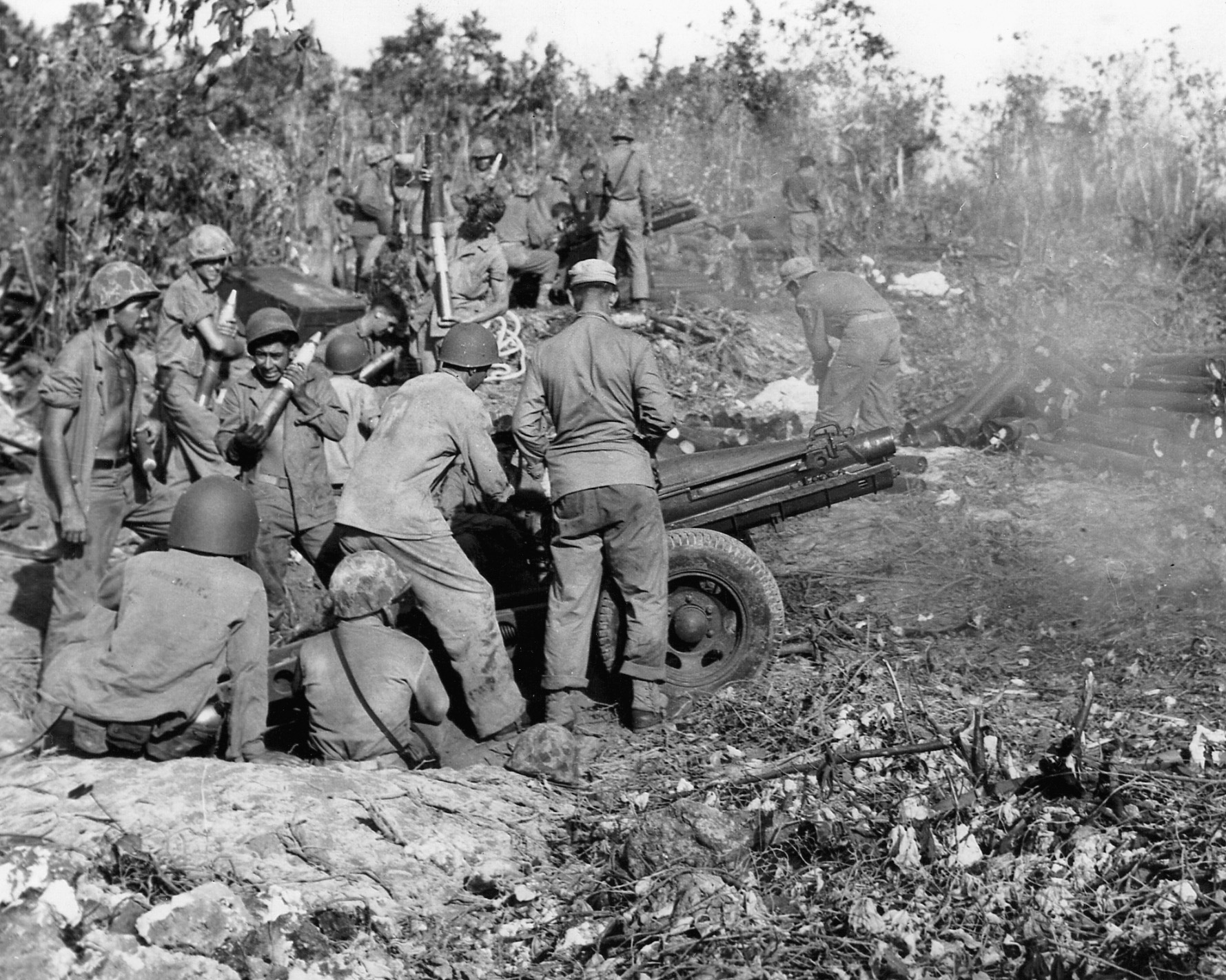
Rupertus demonstrated nothing but contempt for the U.S. Army troops assigned to Stalemate II. Although the U.S. Army’s 81st Division had yet to see combat, they had trained hard and were in top-notch shape for the upcoming assault. Much of their esprit de corps came from their leader, Maj. Gen. Paul Mueller, a West Point graduate and World War I hero. Despite this, Rupertus wanted Peleliu to be entirely a Marine operation.
Just prior to D-day, a letter was circulated by Rupertus explaining his euphoria about the invasion. He expected the operation to resemble Tarawa, fast but furious, and anticipated that Peleliu would be captured within four days. This unrealistic prediction was to “color tactical thinking ashore for a month to follow.”
“Most officers believed this unusual document intended in the nature of a ‘pep talk,’ wrote Major Frank O. Hough, USMCR, in his monograph The Assault on Peleliu. “This was not its effect on the news correspondents, however: many of the 36 accredited to the division did not come ashore at all, and only six (one of whom was killed) chose to stay through the critical early phases. Hence, news coverage of the operation was sketchy, often misleading, and when quick conquest failed to materialize, tinged with biting criticism.”
Preparing For the Battle of Peleliu
Despite the disagreement over the length of the campaign, the “raggedy-ass Marines” of the 1st Division were considered by many to be the best amphibious unit in the Pacific Theater. They already had two successful operations to their credit: Guadalcanal and Cape Gloucester.
Since Gloucester had ended, however, the division had been sent to Pavuvu for rest and recuperation (R&R). Many were disappointed because the regiment had their last R&R in Australia. Located in the Russell Islands, Pavuvu was described as “a rain-soaked, rat-infested hunk of real estate.” In addition to being a wretched place, Pavuvu’s terrain had nothing in common with that of Peleliu. In spite of these drawbacks, the leathernecks made the best of it.
As replacements arrived and training began, the older veterans passed on their knowledge to the fresh recruits. As the months passed, morale rebounded. Sick cases began to dwindle and the unit was imbued with a new spirit. “Or perhaps, as many firmly believed, all hands were simply so disgusted with Pavuvu that they welcomed the opportunity to vent their resentment on the Japanese,” wrote Hough.
A severe shortage in various types of gear was another serious problem the Marines faced. The harsh jungle conditions of the Guadalcanal and Cape Gloucester campaigns had greatly reduced their amphibian tractors, flamethrowers, bazookas, Browning Automatic Rifles (BAR), and communication equipment. These items had to be replaced quickly.
The 1st Marine Division had no experience landing across a wide fringing reef. All of their operations had been in a jungle environment. “Considerable training was required in the … launching of amphibian tractors and DUKWs (amphibious trucks) from Landing Ship, Tanks (LSTs) at sea, transfer of troops from landing craft to vehicles in deep water, advance in waves across the coral, and quick formation of the land assault once disembarked,” wrote Hough.
The division began receiving the newer LVT (A) (1) or amphibian tank to train with. By the first week in August, however, the newer LVT (A) (4) started arriving. The newer vehicle had a 75mm snub-nose gun mount instead of the 37mm on the (1) model. Of the nearly 900 men in the 1st Amphibious Tractor Battalion, about 50 were familiar with the tank. “It would be an insult to the intelligence of a military minded reader to say that the battalion was sufficiently trained and indoctrinated to carry out its mission,” wrote Lt. Col. Kimber H. Boyer, 3rd Armored Amphibian Battalion commander. “It can be considered some sort of miracle that the initial phase of the operation was not seriously disrupted.”
Despite the many setbacks and problems encountered by the leathernecks, the division was as ready as it could be for the invasion. The training phase was over. Nakagawa’s men were waiting.
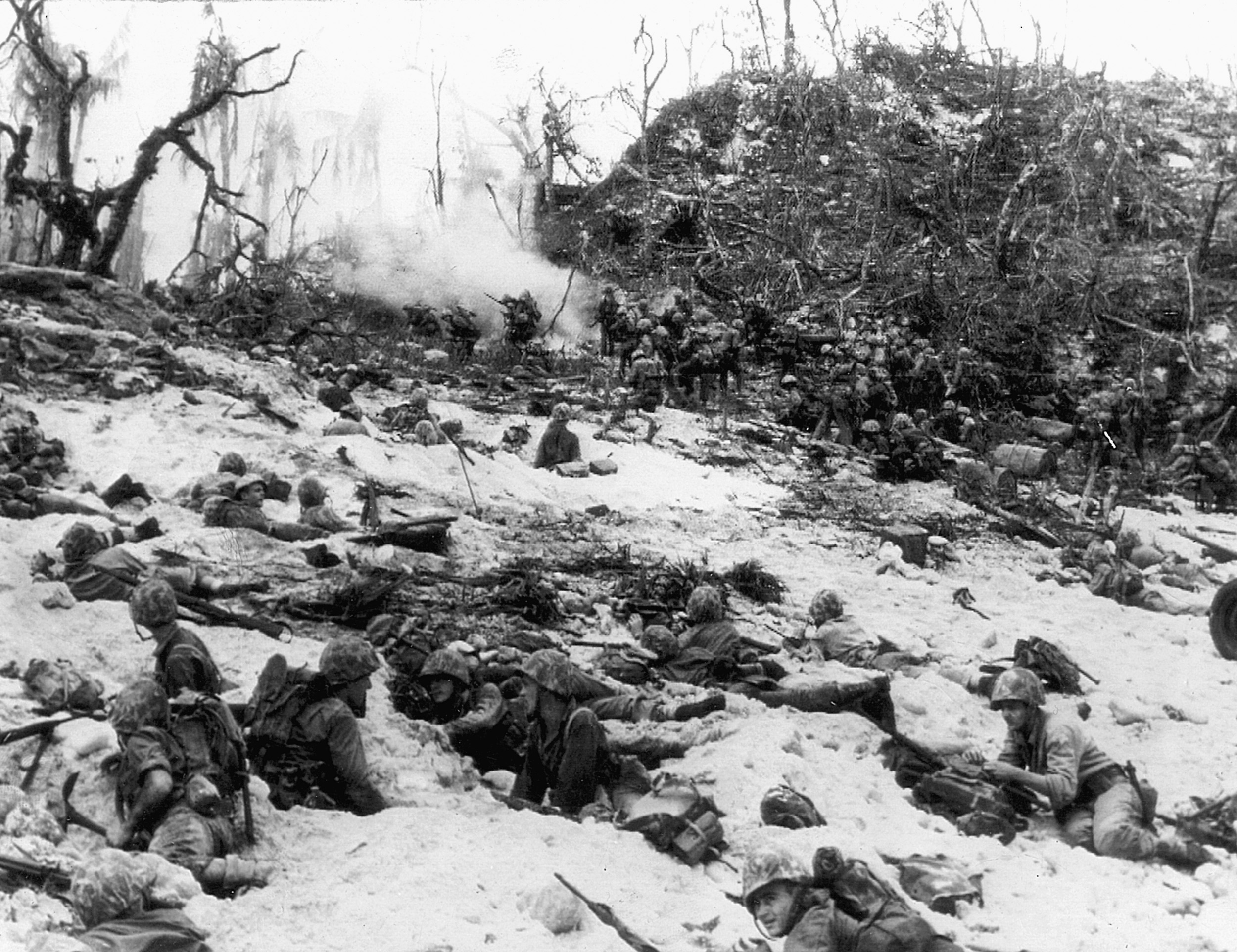
A New Timetable For the Pacific Theater
In early September, 30 LSTs steamed from Cape Esperance in the Solomon Islands where the Marines had participated in their final training exercise for the upcoming Battle of Peleliu. The assault companies and their supporting units were jammed into the flat-bottomed vessels. The heat was stifling.
While the leathernecks were being transported to their objective, Vice Admiral Marc Mitscher’s aircraft carriers of Task Force 38 hit the Palaus on September 6-8. On September 12, his naval group struck the Central Philippines, shot down 173 Japanese planes, and eliminated another 305 that were on the ground.
Third Fleet Commander Admiral William F. “Bull” Halsey was struck by the obvious absence of Japanese airpower. He fired off a cable to Admiral Chester A. Nimitz, commander of the Central Pacific area, recommending that the Yap and Palau operations be canceled; the assault forces slated for those campaigns could be given to MacArthur for the Philippine incursion. Halsey also recommended that the attack on Leyte in the Philippines be rescheduled from December to October, two months sooner.
The memo was forwarded to the Joint Chiefs of Staff, who were attending the Octagon Conference in Quebec, Canada, with President Franklin D. Roosevelt. MacArthur could not be reached for his comments, but his chief of staff, Lt. Gen. R.K. Sutherland, was in agreement with Halsey’s recommendations and was certain MacArthur would concur with the new timetable.
Consequently, the Yap assault was nixed and the Leyte operation was now scheduled for October 20. The Eastern Attack Force was diverted to Manus Island and joined MacArthur’s Southwest Pacific Army. The Western Attack Force, however, was to continue with its assignment of seizing Peleliu, Ulithi, and Angaur. Nimitz had excluded that part of the message to the Joint Chiefs because he felt the right flank needed protection. “The invasion forces were already at sea,” he said. “and … the commitment already made to phase I precluded calling off the invasion.”
Oldendorf Out of Targets
The original plan called for only two days of naval gunfire for the prelanding bombardment of Peleliu. That was altered, and the Marines were given another day. This was to include the elimination of any enemy aircraft on the ground and artillery installations and razing as many strongpoints as possible. Because of the nearness of the other islands where additional troops could reinforce Nakagawa’s garrison, naval gunfire was to destroy any barges, sampans, and ships that could accomplish this mission.
Rear Admiral Jesse Oldendorf’s Heavy Strike Force of four battleships, plus numerous cruisers and destroyers, let loose a tremendous barrage of 16-inch, 14-inch, and 5-inch shells on Peleliu. This salvo destroyed most of the above-ground structures, such as the barracks, hangars, and utility and administrative buildings. But, unknown to Oldendorf, his bombardment, although awesome to be sure, had a negligible effect on the defenders burrowed underground.
Rupertus and Lt. Col. Lewis J. Fields, the division operations officer, were shocked when Oldendorf radioed
saying he had run out of targets. “Their reaction was that of incredulity,” wrote Lt. Col. F.A. Ramsey, Jr., a member of the division staff. “[It] was not only a surprise but was not understood by any of us … in view of the study and requirements we had submitted, and the plans which had been so carefully prepared and agreed to as essential.”
In spite of their condemnation of the pre-invasion bombardment, the Marines had to settle for the three days the navy provided. The rest was up to the infantry.
The devastating pounding of Peleliu did not shake Nakagawa’s men in the least. As the invasion forces closed in on the island, morale was never higher. “The enemy has planned to land,” one Japanese soldier penned in his diary captured after the battle. “Let them come if they’re coming! Who is afraid of the Americans or the British. We will defend Peleliu!”
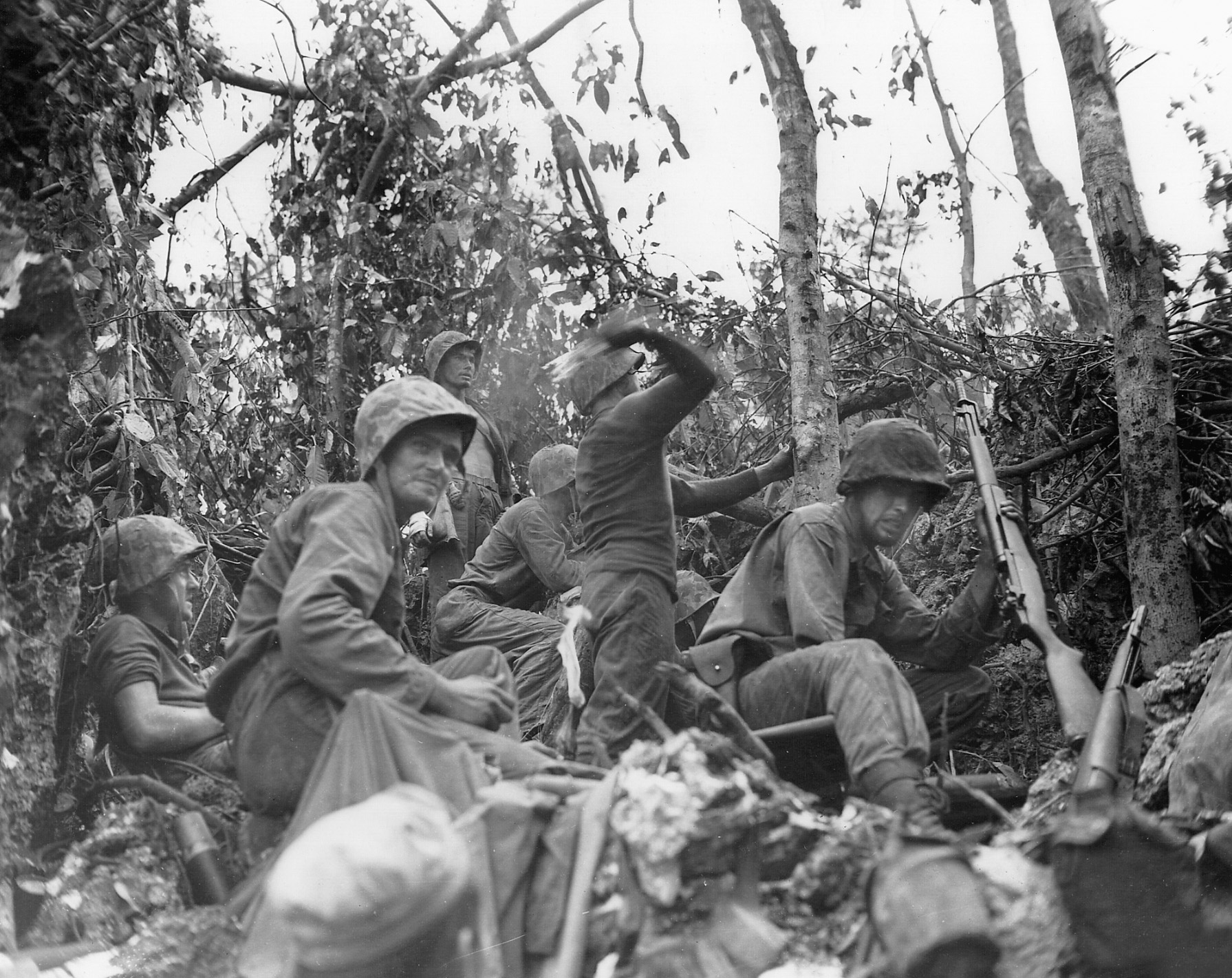
“Arms, Legs, Heads, Guts, and Brains Went Flying,”
At first light on September 15, the Japanese defenders of Peleliu saw the unmistakable silhouettes of hundreds of U.S. ships offshore. It was a clear, calm morning and the Marines at least had the advantage of a “placid sea” for the assault.
Underwater Demolition Teams (UDT) had done a remarkable job of clearing the approaches to the beaches and scouting the reef. Naval guns trained their sights on the islands and sent round after round crashing into the terrain. Just before 8 am carrier aircraft raked the landing beaches to remove any gun emplacements.
The LVTs transporting the first waves of infantry formed their line of departure about 4,000 yards offshore. The amphibian tanks of the 3rd Armored Amphibian Battalion preceded the LVTs to provide covering fire for them. Also, 18 Landing Craft Infantry (LCI) vessels fired their 4.5-inch rockets in support. More U.S. Navy fighter-bombers unleashed their ordnance on the beach as the heavier guns of the ships offshore began walking their shells inland.
All of this firepower had obscured Peleliu’s view. “Nothing could live through that,” remarked one Marine. His words would prove to be wrong.
As the dust and smoke began to clear, Lt. Col. H.C. Tschirgi watched the fireworks display from a transport. To everyone’s dismay, Japanese artillery and mortar fire began shelling the landing craft as they hit the beach. He later commented, “I’d never seen combat before and the first thing that struck me was that this was a hell of way to treat $40,000 equipment.”
Enfilading fire had indeed zeroed in on the Marines as they stormed ashore. As the infantrymen drove inland, enemy resistance became increasingly more difficult. On the fourth wave, the Sherman medium tanks of Company A, 1st Tank Battalion, took hits from hidden enemy gun emplacements. Of the 18 tanks, only one landed unscathed. By day’s end, only five Shermans were still operational.
The ping of bullets ricocheting off the amtracs could be heard from the occupants as they lurched onto the beaches. Some of the tracked vehicles took direct hits. “Arms, legs, heads, guts, and brains went flying,” recalled Pfc. Charles Doolittle of the 5th Marines.
Peleliu was “a nightmare of flashes, violent explosions, and snapping bullets …” wrote Pfc. Eugene B. Sledge, a mortar man with Company K, 3rd Battalion, 5th Marines.
From the outset, Puller’s men had the roughest going on the White Beaches. Japanese shells killed and destroyed much of the 1st Marines communications and its operators. It would be later in the day before radio contact was established between Puller’s command post (CP) and the division.
Taking the Point
On White Two, the 2nd Battalion, 1st Marines pushed inland against “moderate resistance.” The 3rd Battalion, however, ran into a maelstrom of Japanese mortar and automatic weapons fire. Hardest hit was Company K led by Captain George P. Hunt. His 225-man unit was given the unenviable task of securing a promontory called “the Point.”
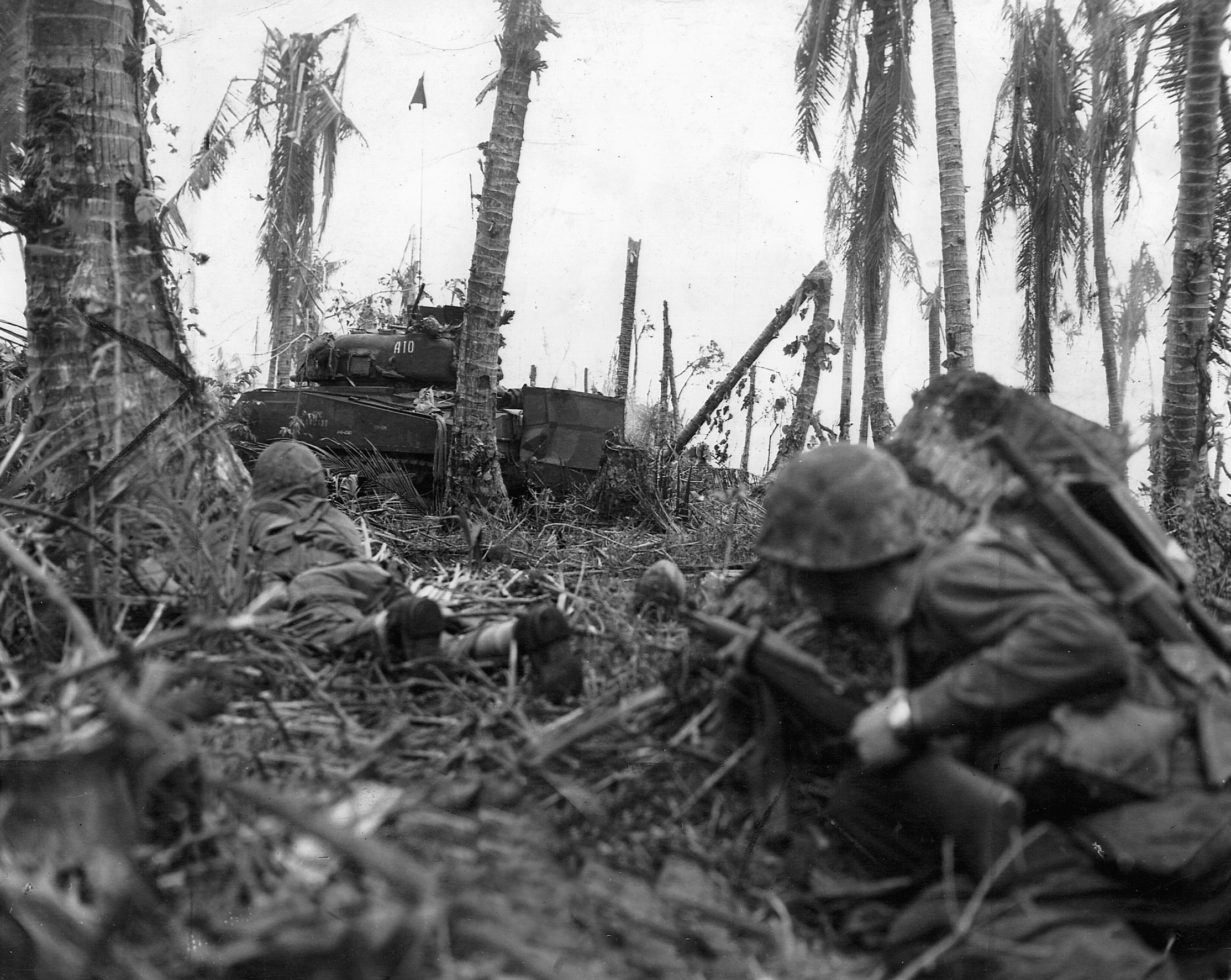
In his personal account, Coral Comes High, a book he wrote after the war, Hunt described the Point: “[It] rose thirty feet above the water’s edge. [It was] solid, jagged coral … sharp pinnacles, deep crevices, and tremendous boulders. Pillboxes, reinforced with steel and concrete, had been dug or blasted in the base of the perpendicular drop to the beach. Others, with coral and concrete piled six feet on top, were constructed above, and spider holes were blasted around them for protecting infantry. It surpassed by far anything we had conceived of when we studied the aerial photographs.”
For nearly two hours, Hunt’s Marines hurled themselves against the Point. This enclave had to be taken to eliminate the devastating fire pouring down on the riflemen still coming ashore. Lieutenant William A. Willis tossed a smoke grenade near an opening that contained a 47mm cannon. Meanwhile, Corporal Robert Anderson fired several rifle grenades from his M-1. The second one exploded and ignited the ammunition stored in the enclosure. Screaming enemy soldiers raced from the pillbox and were immediately cut down. Hunt’s men had secured the Point. However, the cost was not cheap. Hunt’s 2nd Platoon had become isolated, and he was unaware of their casualties. He wasted no time in establishing a perimeter with the remnants of his 1st and 3rd platoons. All he had were 32 Marines.
“Plug the Gap”
Realizing Company K was stranded atop the Point, Lt. Col. Stephen Sabol, 3rd Battalion, 1st Marines commander, quickly dispatched Company L to “plug the gap” between Hunt and Company I. Japanese gunners kept the pressure on, and the reinforcements were unable to reach Company K. Hunt’s men were stranded and on their own.
In the center, the 5th Marines had an easier time, meeting only scattered resistance. Harris’s leathernecks drove into Peleliu’s interior and secured their first objective by midmorning. One slight mishap did occur: Elements from the 7th Marines inadvertently went ashore on Orange Two instead of Orange Three, delaying the advance of Company K, 3rd Battalion, 5th Marines. The error was quickly corrected, and the momentum was soon regained.
On Orange One, Corporal Lewis K. Bausell’s squad inched forward to eradicate Japanese defensive positions in some thick scrub. Fanatical enemy soldiers ran out clutching grenades, killing themselves and wounding nearby Marines. One soldier tossed a grenade from an opening that fell near Bausell and several other riflemen. He immediately flung himself on the device. Miraculously, Bausell survived the explosion but died later of his wounds. His was the first of eight Medals of Honor awarded to the Marines who fought in the Battle of Peleliu.
While the 1st and 5th Marines were slugging it out, the 7th Marines ran into a large number of natural and man-made obstacles on the beach. These obstructions diverted the amtracs to the left, causing confusion, which took time to rectify. A massive antitank ditch was used for a CP and provided cover for the advancing infantry.
Peleliu’s beaches were strewn with discarded equipment, burning vehicles, and mangled bodies. Life Magazine correspondent and artist Tom Lea witnessed a wounded Marine stumbling toward the beach. “His face was half bloody pulp, and the mangled shreds of what was left of an arm hung down like a stick,” he later wrote.
Japanese Armor on Peleliu
By late morning, the 3rd Battalion, 7th Marines had gained approximately 500 yards. Their advance was soon impeded, however, by a stronghold of enemy pillboxes and blockhouses near the barracks area. The clanking of the Sherman tanks announced their arrival but they mistakenly began to support the 3rd Battalion, 5th Marines. Soon a gap developed between the two units. Which was not closed until later in the afternoon.
By late afternoon, dust from moving vehicles could be seen in the distance.
“Nip tanks!” yelled one Marine.
He was right. Thirteen light Japanese tanks were approaching the location of the 1st and 5th Marines. Snipers rode atop the armored vehicles, and infantry followed behind them. The Marines opened up with everything they had: 75mm howitzers, 37mm guns, bazookas, and heavy machine guns tore into the invading force. Most of the Japanese tanks were set ablaze, but two, however, did manage to penetrate the perimeter and were quickly eliminated. This was the only large, organized attack during the struggle for Peleliu. Throughout the battle, the enemy remained hidden.
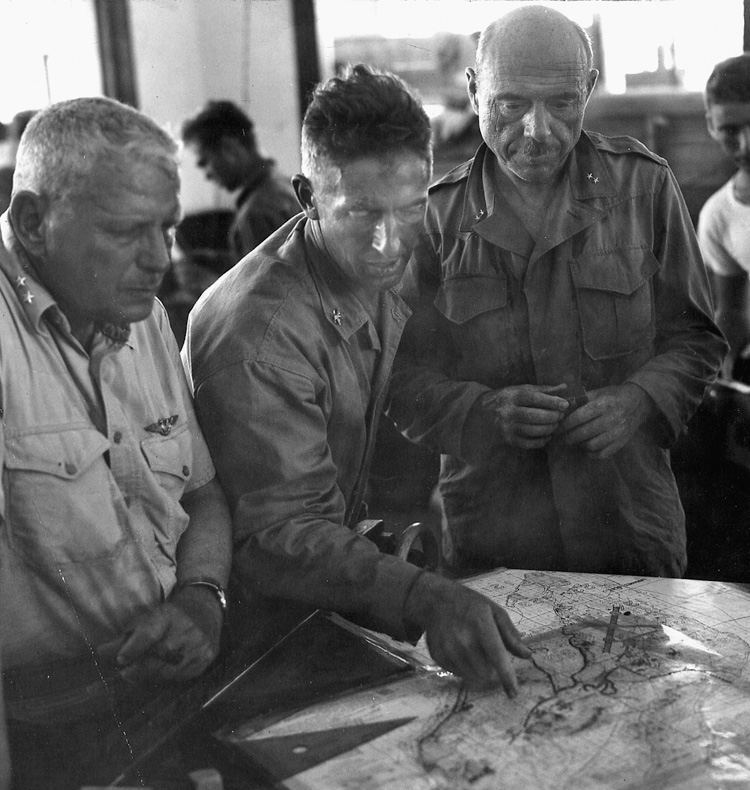
Nightfall was uneventful as the expected Banzai attack never materialized. Minor incursions and penetrations took place all along the lines. Lt. Col. Lewis W. Walt, executive officer of the 5th Marines, had taken over command when Lt. Col. Austin Shofner was wounded in a mortar attack. Walt, accompanied only by a runner, crawled out beyond the 5th Marines’ lines, located each unit, and brought some semblance of order to the perimeter. For this outstanding achievement, he was awarded the Navy Cross.
“It had been a bad day for the 1st Marine Division,” wrote Richard Wheeler in his book A Special Valor: The U.S. Marines in the Pacific War. “Casualties numbered 1,111 killed, wounded, and missing. There were also numerous cases of combat fatigue and heat prostration. General Rupertus was troubled not only by the high casualties but also by
the fact that the beachhead embraced less than half the southern part of the island, when he had expected to take the entire region by nightfall. He began to rue his prophecy that the campaign would be a brief one.”
And this was just the first day.
The Japanese on Peleliu had employed a new technique that was to set the precedent for future amphibious operations in the pacific. The leathernecks watched for some crack in morale, but none was forthcoming. Nakagawa’s troops were the best Japan had to offer and would not make many mistakes during the campaign.
“Goddammit Lewie, You Gotta Kick Ass to Get Results”
By the next day, D+1, artillery from the 11th Marines began registering their guns to the relief of the infantry. Just before 10 am, General Rupertus hobbled ashore and went to the division CP set up by Smith the previous day in the antitank ditch on Orange Two. He was agitated at the lack of movement of the 1st Marines and pressured Puller. “Goddammit Lewie, you gotta kick ass to get results,” he yelled.
Ultimately, the strain of the Peleliu campaign would have a devastating effect on Rupertus. He confided in one staff officer near the end of the fighting, “This thing has just about got me beat.” He would return Stateside and die as a result of heart failure in March 1945.
Despite Rupertus’s unflattering remarks, the 1st Marines were pushing—into some of the worst terrain ever encountered during the Pacific War. The 1st Marines Regimental Narrative describes it best: “Along its center, the rocky spine was heaved up in a contorted mass of decayed coral, strewn with rubble, crags, ridges and gulches thrown together in a confusing maze. It was impossible to dig in: the best the men could do was pile a little coral or wood debris around their positions. The jagged rock slashed their shoes and clothes, and tore their bodies every time they hit the deck for safety. Each blast hurled chunks of coral … multiplying many times the fragmentation effect of every shell. Into this the enemy dug and tunneled like moles; and there they stayed to fight to the death.”
Hunt’s men atop the Point held out. They fought off repeated assaults by fanatical Japanese. In some places the enemy dead lay four deep. After a terrifying 30 hours, the stranded Marines were rescued. Of the 235 original riflemen that landed, only 78 walked away.
Puller’s leathernecks continued to attack. As the days passed, companies were reduced to platoons and were being led by corporals. The Marines soon christened the area “Bloody Nose Ridge.”
The combat in the Umurbrogol was unforgiving. Captain Everett C. Pope, leading Company C, 1st Battalion, 1st Marines, was fighting in an area dubbed ”Walt’s ridge.” Throughout the night and into the next day, his men repulsed numerous enemy thrusts.
“As the fighting became hand-to-hand, the Marines pitched some of their attackers bodily over the steep cliffs,” wrote James H. Hallas, in his account The Devil’s Anvil: The Assault on Peleliu. “Spotting two enemy soldiers climbing the slope to his position, a sergeant heaved an empty grenade box at them, then opened up with his rifle. Private First Class Philip Collins of Gardiner, Massachusetts, picked up Japanese grenades before they exploded and tossed them back. ‘He did that until one exploded in his hand,’ reported Pope. ‘Then he picked up a rifle and used that until he was too weak to load the weapon.’”
“They Weren’t Fire Eaters Anymore”
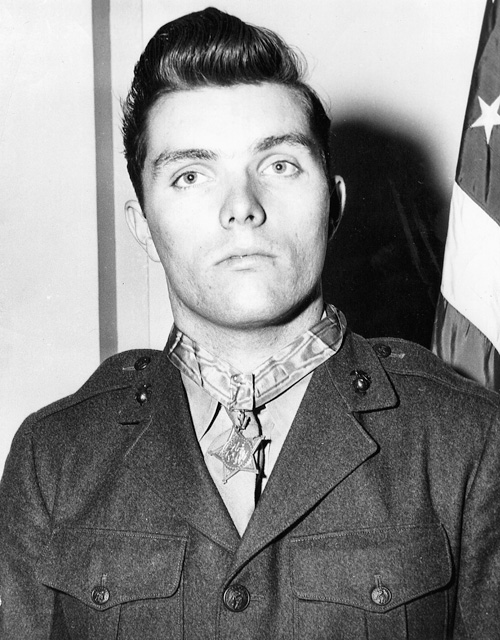
On September 21, Geiger realized that the 1st Marines were through as a fighting unit. “They weren’t fire eaters anymore,” remarked one officer. Greiger ordered one Regimental Combat Team from the 81st Division to land. Incredibly, Rupertus did not agree and argued that his Marines, if given another day or two, could finish the job. Geiger disagreed and radioed General Mueller. The 321st RCT was sent to Peleliu to relieve the embattled 1st Marines.
The other units on the island enjoyed better success, but casualties mounted. The 1st and 3rd battalions, 5th Marines and the 2nd Battalion, 1st Marines were poised to seize the airstrip. Riflemen had to attack the position while Japanese gunners, concentrated on the ridges, could “look down their throats.” As the ranks pressed ahead, bullets “snapped and cracked” like “some unreal thunderstorm.”
While the infantry trotted across the airfield, the sound of the wounded and dying was unnerving. “Cries for corpsmen went largely unanswered,” wrote Hallas. “Many of the hard-hit Marines bled to death on the hot coral runways before anyone could get to them.”
Despite the intense barrage, the leathernecks secured the strip. As the days passed, they moved northeast to capture Peleiu’s lower pincer. The RDF was destroyed and two islands—Nhabad and Island A.—were cleared offshore. By September 23, the 5th Marines had cut a path all the way to the sea, designated Purple Beach. The division made this a rest area, if such a thing could be found on Peleliu.
During the evening of September 23-24, General Inoue attempted to bolster Nakagawa’s forces from Babelthuap. Despite an awesome array of firepower from naval ships and artillery, about 600 enemy troops did manage to make it to shore. They melted into Peleliu’s elaborate cave system and were probably killed during the course of the battle.
Pfc. Arthur Jackson’s Medal of Honor
On September 28, the 3rd Battalion, 5th Marines conducted an amphibious assault on Ngesebus Island in the north. Artillery preceded the landing and Vought F4U Corsair fighters from VMF-114 strafed the beaches. While Company L overran the eastern portion of the island, Company K pushed to the north. By the following afternoon, Ngesebus was in Marine hands.
To the south, the 7th Marines advanced against stiff enemy resistance. Company I, 3rd Battalion, 7th Marines ran headlong into three concrete dual-purpose gun positions. Nothing could dent this position, and finally combat engineers, hidden by smoke grenades, set charges to demolish the structure.
No single man contributed more to the effort to eliminate enemy strongholds in the southern area than Pfc. Arthur Jackson of the 3rd Battalion, 7th Marines. The burly 19-year-old BAR man from Alaska kept Japanese defenders pinned down while he pitched white phosphorous grenades and satchel charges into the apertures and eliminated position after position. In all, he destroyed 12 bunkers and killed 50 enemy soldiers. He would be awarded the Medal of Honor and subsequent promotion to second lieutenant for his exemplary bravery.
A Hard Fight for the Umurbrogol Pocket
Within three days the 7th Marines had removed most of the enemy from the southern end of the island. Hanneken sent a message to division headquarters: “At 1520, O-1 was taken. The Seventh Marines Mission on Peleliu is completed.”
The respite for the 5th and 7th Marines, unfortunately, was a temporary one. With the departure of the battle-weary 1st Marines, Rupertus ordered every able-bodied rifleman into the desperate struggle for the Umurbrogol.
Time dragged on for the weary infantrymen entangled in the mountainous spine of Peleliu. Naval gunfire proved to be useless against the coral bastion, and 75mm howitzers were manhandled up some of the cliffs to provide support for the infantry. In what probably were some of the shortest bombing runs of the war, Corsairs dropped tons of napalm in the Umurbrogol. The gasoline and jelly mixture, something new to the Pacific War, stripped the ridges clear of their vegetation. Now the ugliness of the Umurbrogol could be seen by all.
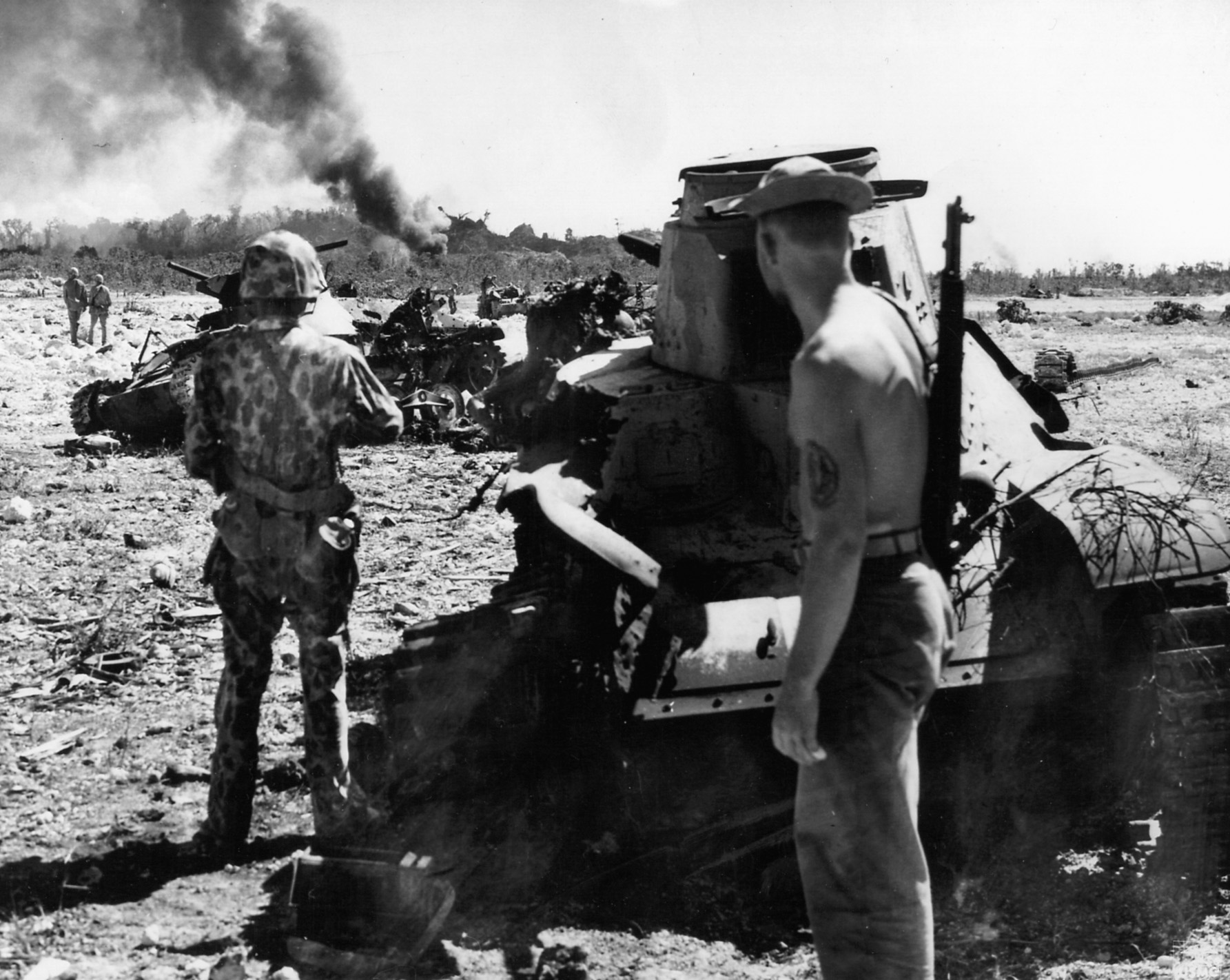
“Every Marine fighting in those hills is an expert,” remarked Major Gordon Gayle of the 2nd Battalion, 5th Marines. “If he wasn’t, he wouldn’t be alive.”
By mid-October, the Marines on Peleliu were through as a combat unit. They stumbled toward the shore, barely carrying their weapons, to be transported to the ships lying in wait. Most stared blankly while others broke down and cried. They had survived a living hell, while thousands of their fellow Marines had not.
Soon, Mueller’s “Wildcats” arrived on the island and took over for the leathernecks. The fighting, however, was far from over.
Nakagawa would make the soldiers pay for every inch of Peleliu. It was an infantryman’s fight. It was the individual rifleman, armed with satchel charges, grenades, and explosive devices, who finally reduced the Umurbrogol to a pocket 900 yards long by 400 yards wide. The soldiers and Marines had christened certain areas of this stone mass with names like China Wall to the north; Walt Ridge, Boyd Ridge, and Unnamed Ridge to the south; the Five Sisters, Death Valley, and Hill 300 looming to the east; the western part included Wattie Ridge, Baldy Ridge, the Knobs, and Ridge 120; and, in the midst of all these terrain features were the Five Brothers, the Horseshoe ,and Wildcat Bowl.
The 321st and 323rd RCTs moved in to continue reducing the Umurbrogol Pocket. The 306th Engineer Battalion was able to erect a coral ramp from the bottom of Wildcat Bowl to the top of China Wall so artillery and supplies could get to the soldiers fighting there.
The 81st Division inched its way forward, eliminating cave after cave. The Horseshoe area, named so by the Marines, was rechristened Mortimer Valley after Captain Joseph F. Mortimer of the 323rd RCT who was killed there.
On the evening of November 24-25, about 45 Japanese soldiers were killed in a violent final stand on Peleliu. It was later learned from a prisoner that Nakagawa and Murai had sent the men forward. They burned the regimental colors and each placed a bullet in his head.
The Battle of Peleliu’s Heavy Toll
At 11 am on November 27, over two months after the initial landing, Colonel Arthur P. Watson, commanding the 323rd RCT, informed General Mueller that Peleliu was secured. “The enemy had fulfilled his determination to fight to the death,” he said.
The cost to seize Peleliu was astronomical in terms of human life. Only 302 of the enemy had been taken prisoner and most of these were laborers. The rest died or were buried alive in the caves. The Marines suffered a total of 6,526 casualties; 1,252 killed, 5,157 wounded, and 117 missing. The 81st Infantry Division sustained 1,393: 208 killed and 1,185 wounded.
The steadfastness of the enemy was apparent as illustrated in the Japanese manual Palau Sector Group Training for Victory: “It is certain that if we repay the Americans (who rely solely upon material power) with material power it will shock them beyond imagination.”
With the exception of the memories of its participants, the Battle of Peleliu remains a footnote in history. The individual soldier or Marine does not concern himself with strategy. His is a personal battle, fought face to face with a determined enemy. The only thing that mattered was survival.
And it was never more apparent than on Peleliu.
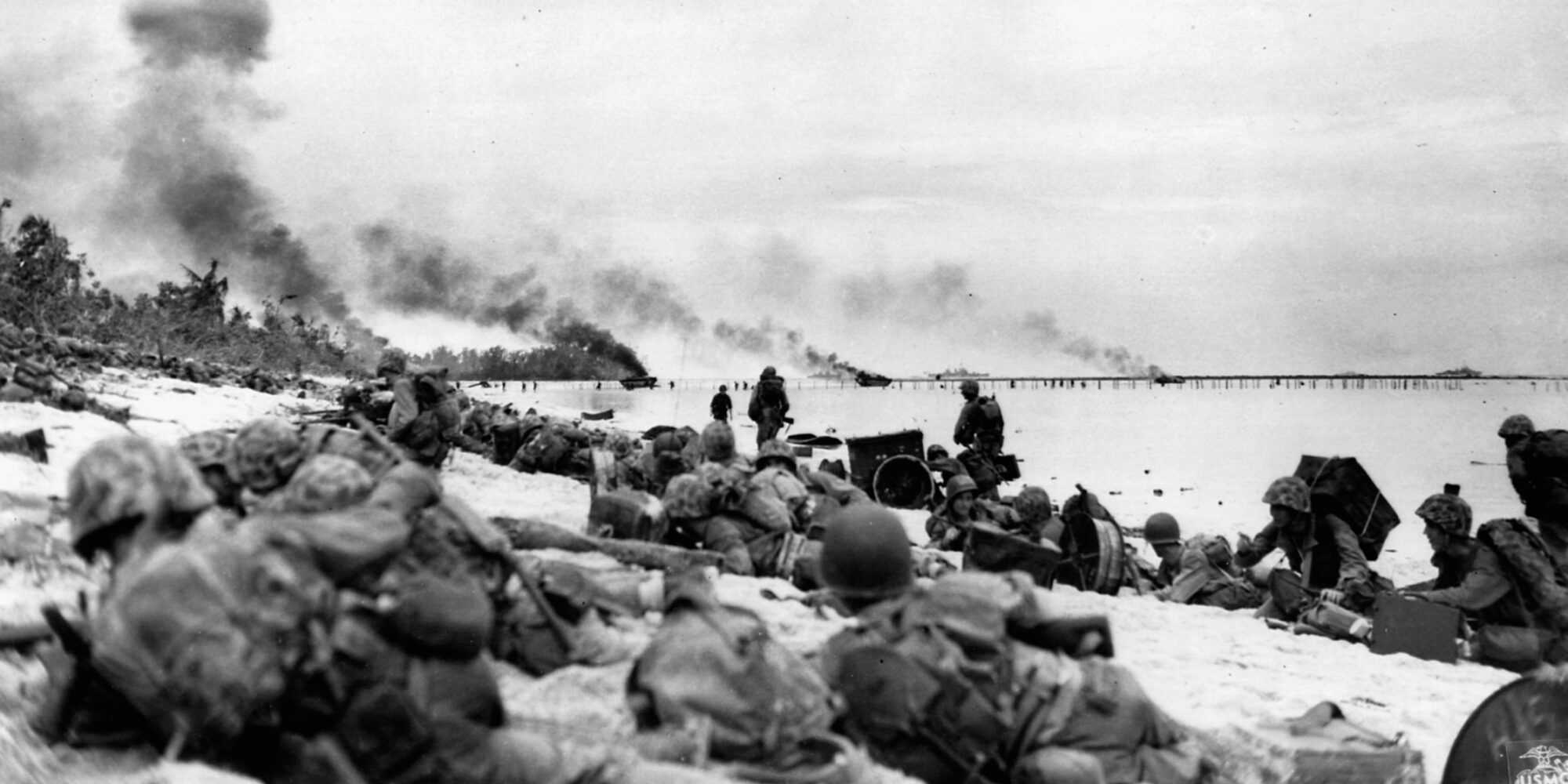
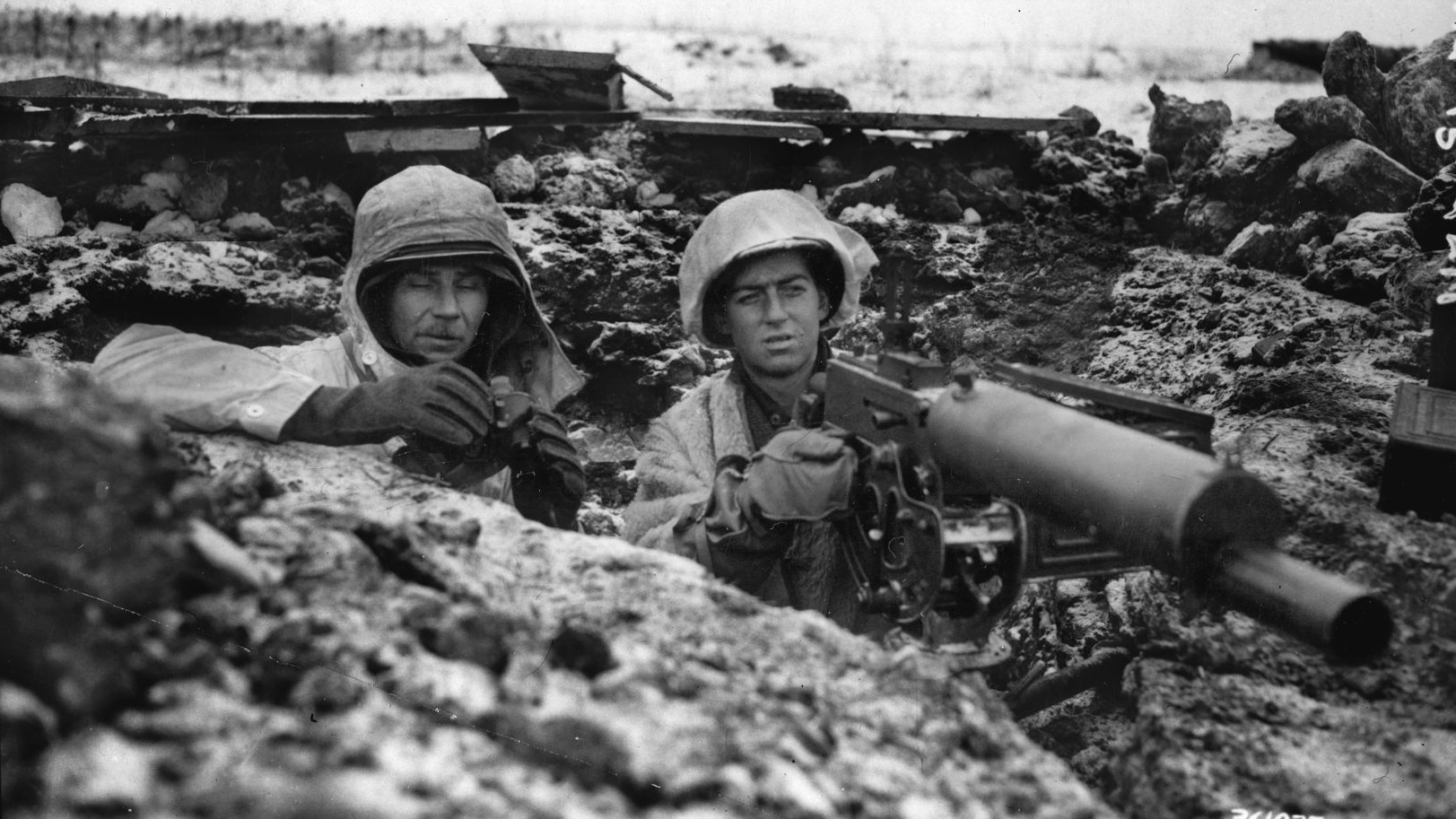
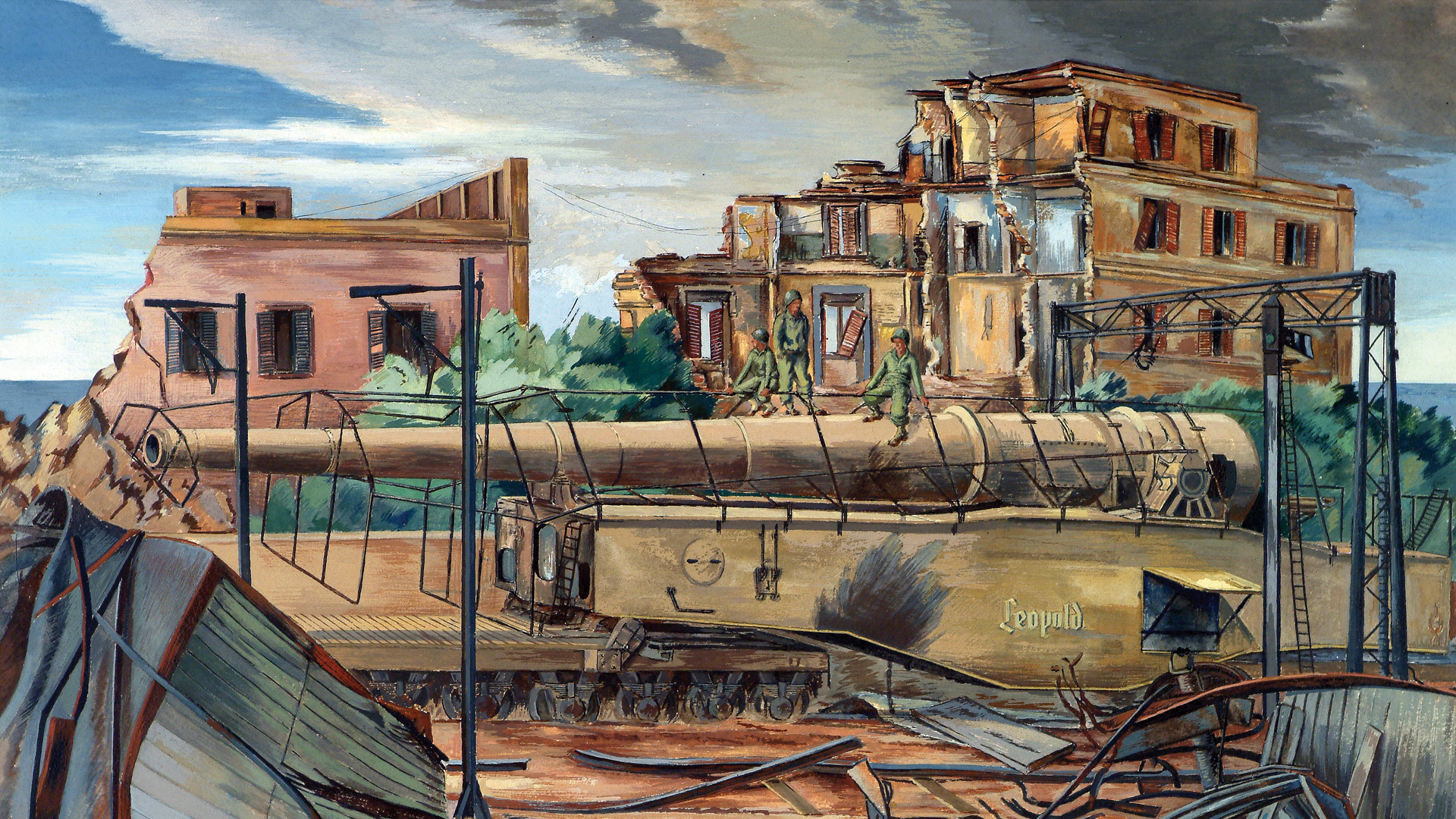
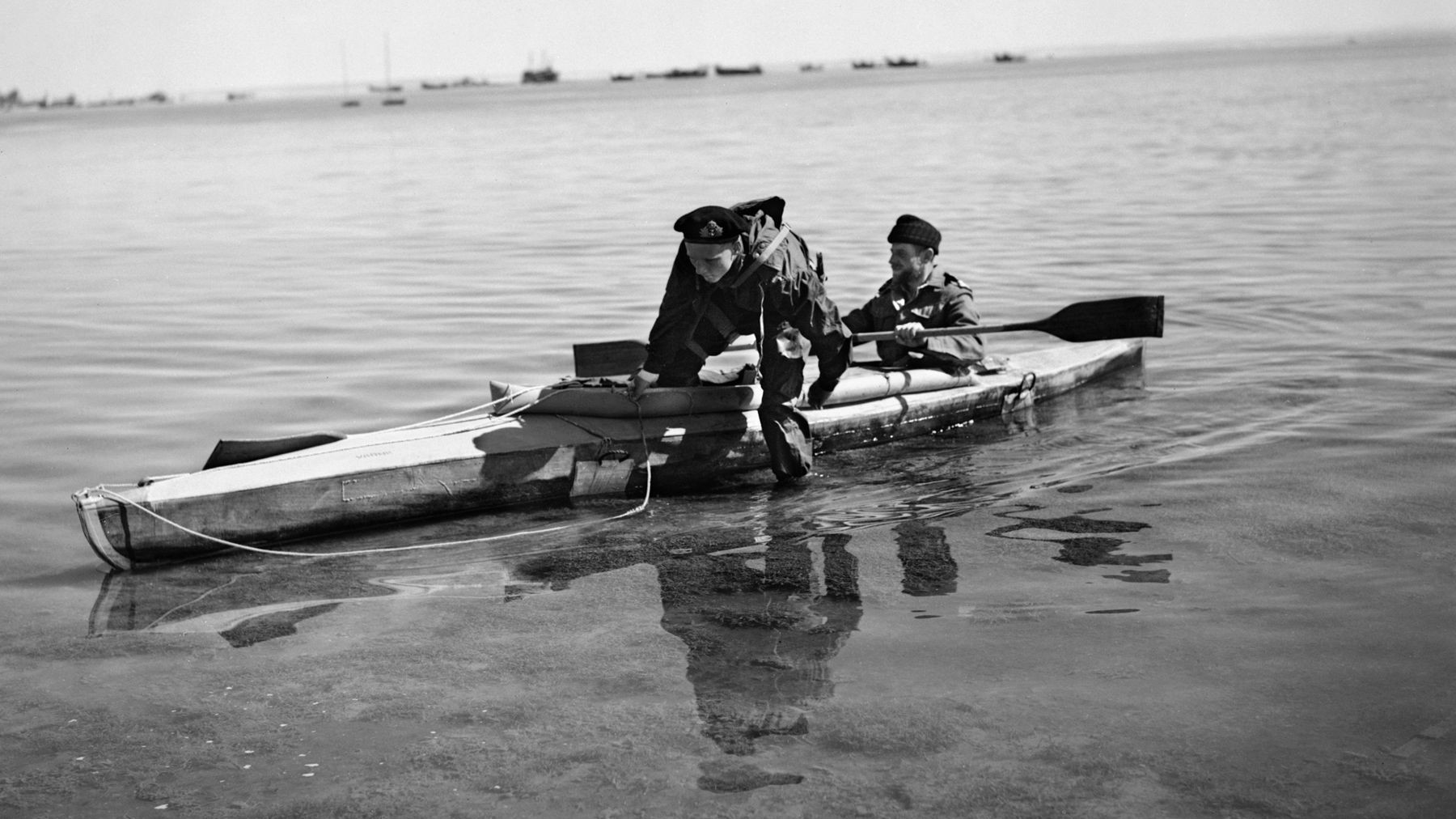
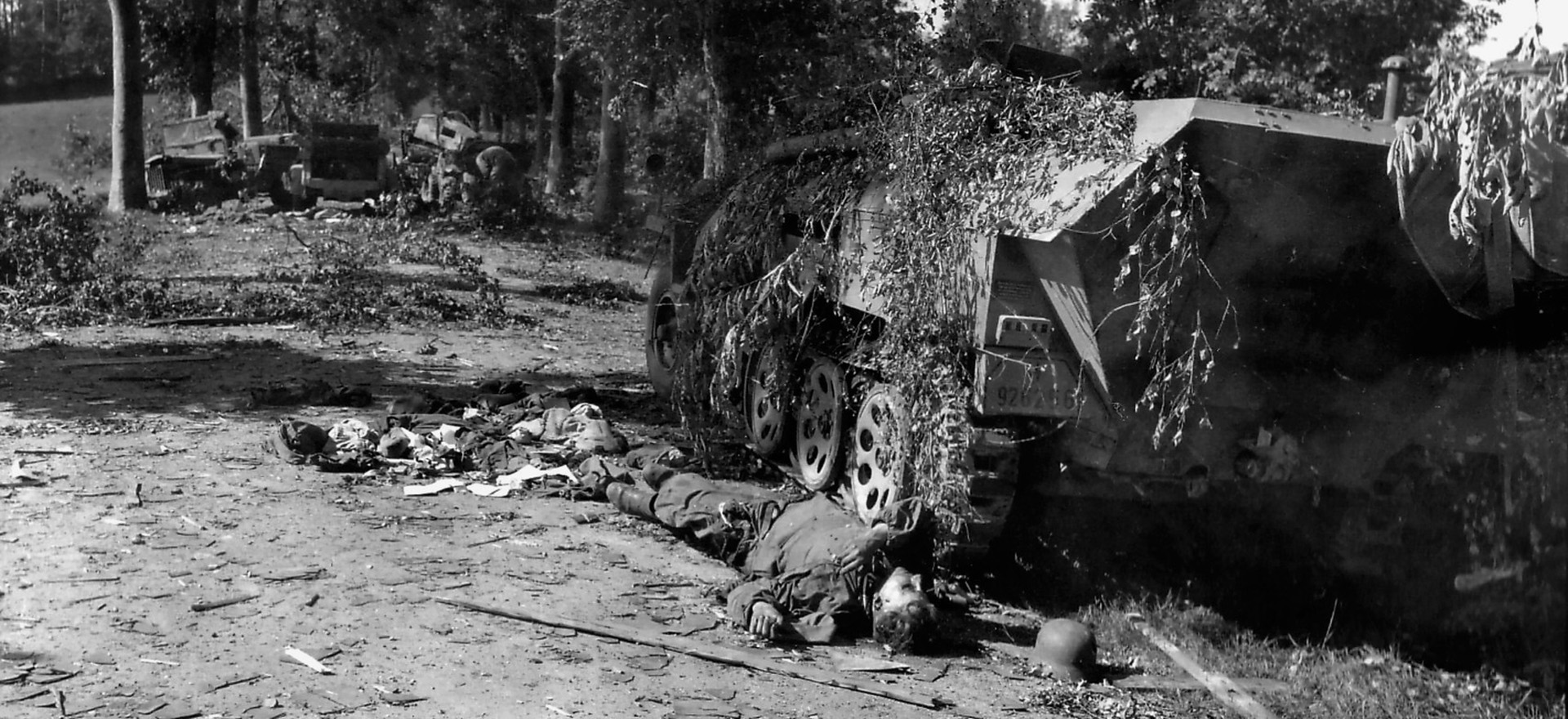

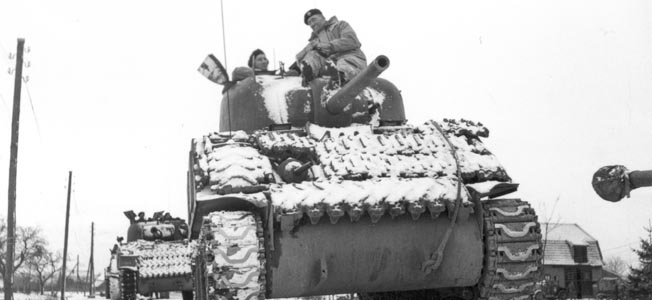
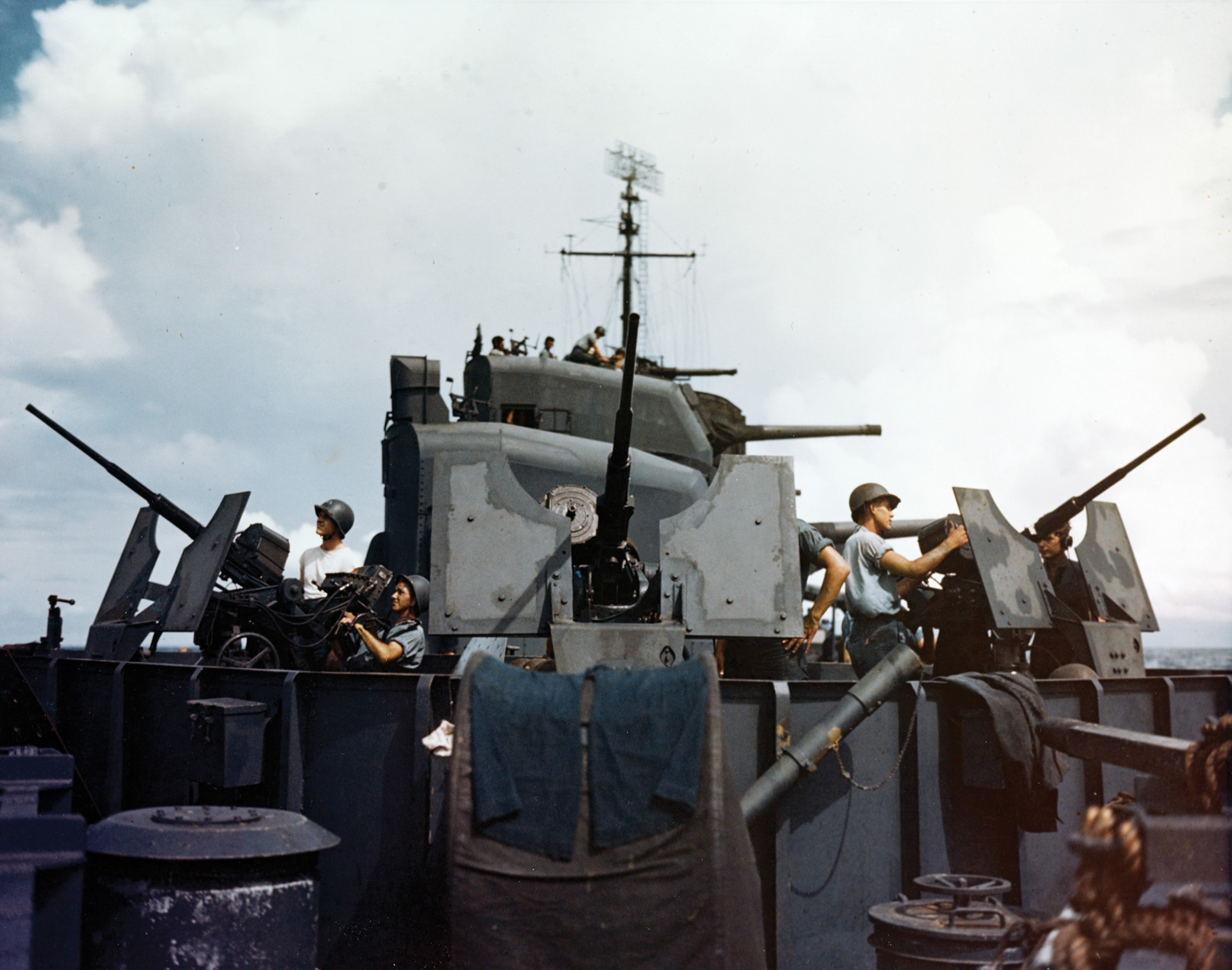
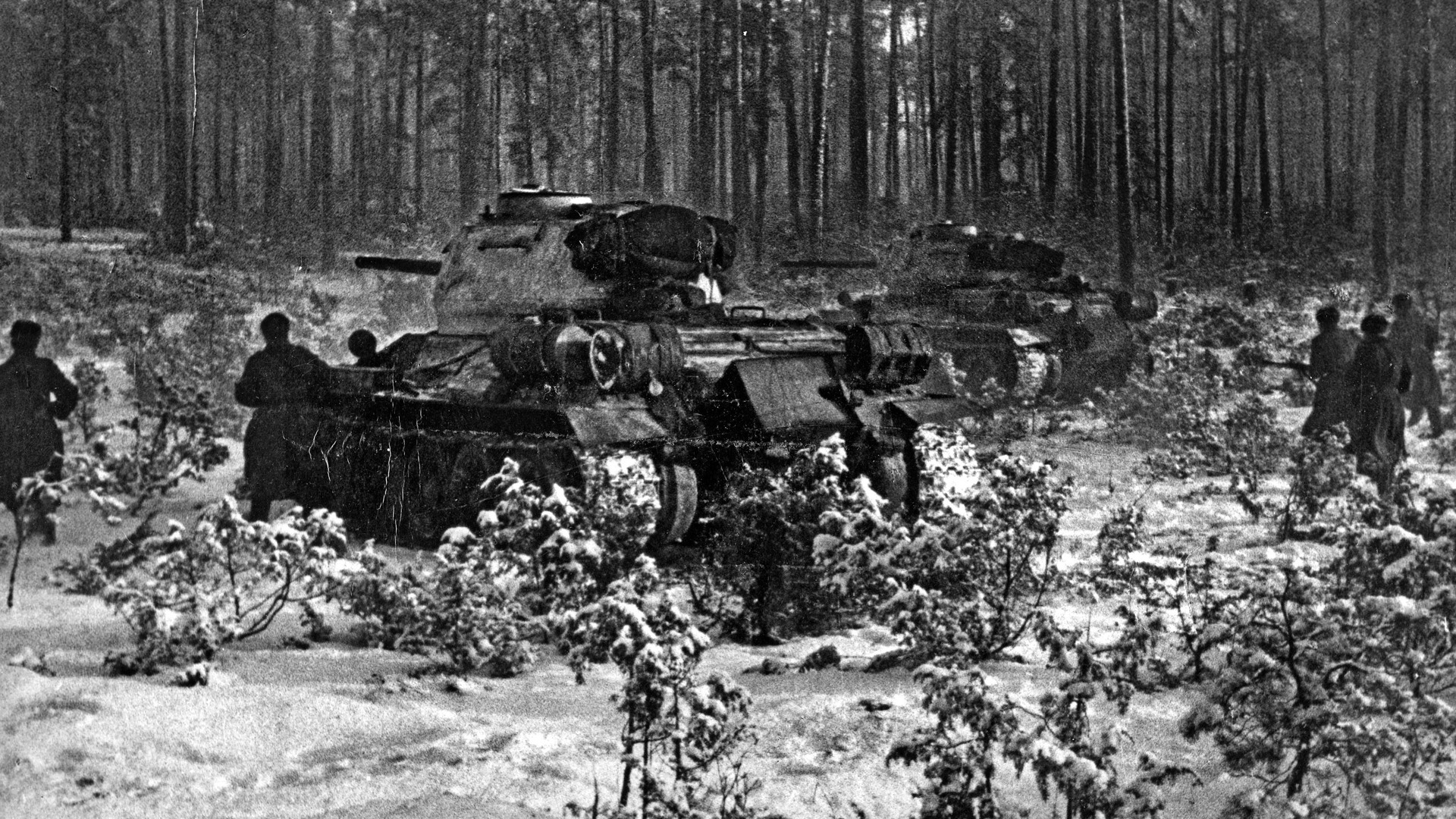
Excellent, well written and concise overview of that horrific battle
WOW! Great writing.
I am in awe of the marines that fought on that island and am glad that I was not among them. I salute them !
Read the book ” With the Old Breed ” for a accurate description of the battle through a Marine’s eyes.
Very good synopsis of the battle and circumstances that led to the invasion. Thank you for mentioning the Army’s participation in this effort.
My father was in the second wave to hit Orange Beach on that day in 1944. He died just a four years ago. My son and I went there three years ago to visit the island and walk the beaches and hills my father did. Very interesting and I’d recommend the trip for any WWII history enthusiasts. Better than “With the Old Breed”, read “Brotherhood of Heroes” by Sloan.
An unnecessary tragedy as the island could have been bypassed and isolated. Despite MacArthur’s desire to have his rear covered prior to the Leyte invasion, the Japanese on Peleliu had no means of even getting to the closest southern Philippine island of MIndanao.